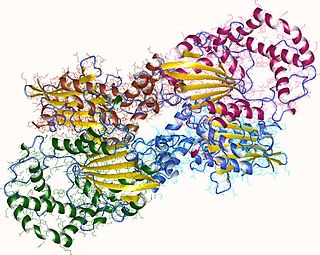| 2-phosphosulfolactate phosphatase | |||||||||
|---|---|---|---|---|---|---|---|---|---|
| Identifiers | |||||||||
| EC no. | 3.1.3.71 | ||||||||
| Databases | |||||||||
| IntEnz | IntEnz view | ||||||||
| BRENDA | BRENDA entry | ||||||||
| ExPASy | NiceZyme view | ||||||||
| KEGG | KEGG entry | ||||||||
| MetaCyc | metabolic pathway | ||||||||
| PRIAM | profile | ||||||||
| PDB structures | RCSB PDB PDBe PDBsum | ||||||||
| Gene Ontology | AmiGO / QuickGO | ||||||||
| |||||||||
The enzyme 2-phosphosulfolactate phosphatase [1] (EC 3.1.3.71) catalyzes the reaction
- (2R)-2-phospho-3-sulfolactate + H2O (2R)-3-sulfolactate + phosphate
This enzyme belongs to the family of hydrolases, specifically those acting on phosphoric monoester bonds. The systematic name (R)-2-phospho-3-sulfolactate phosphohydrolase. Other names in common use include (2R)-phosphosulfolactate phosphohydrolase, and ComB phosphatase.







